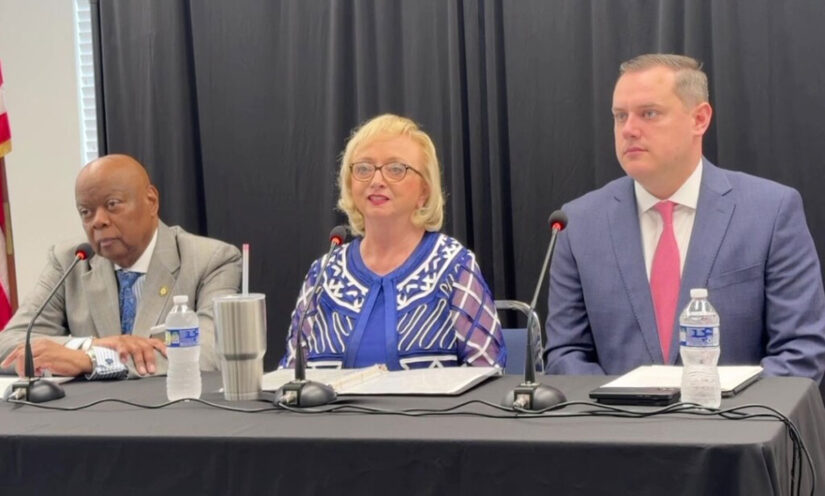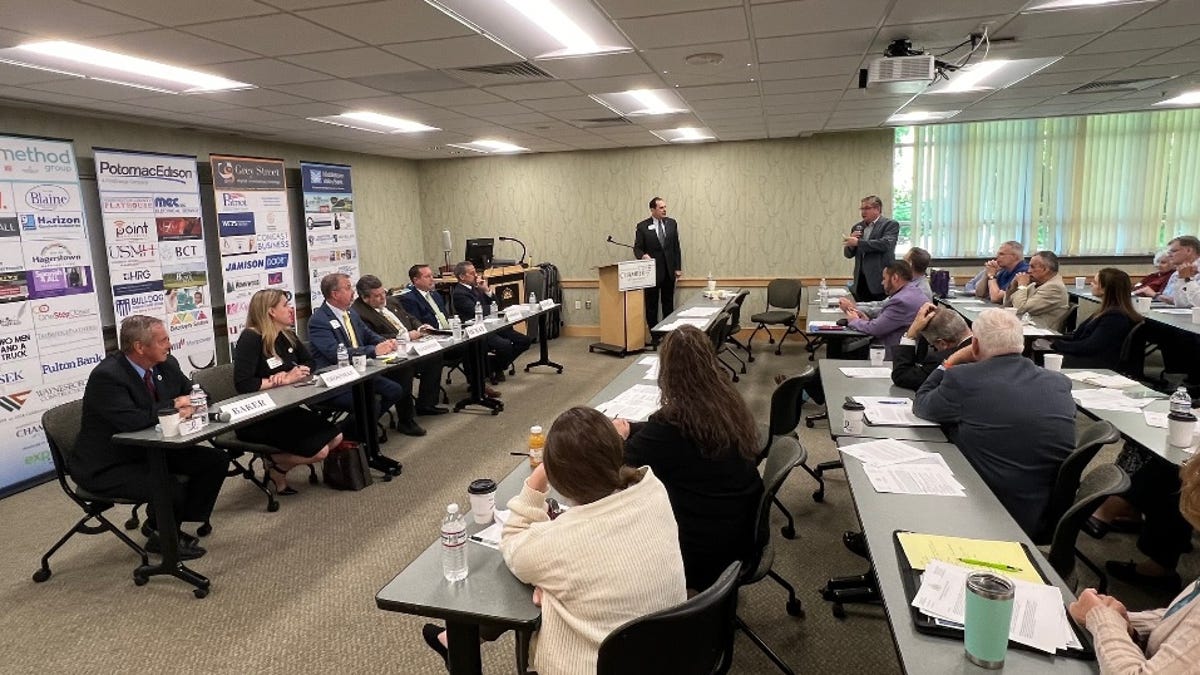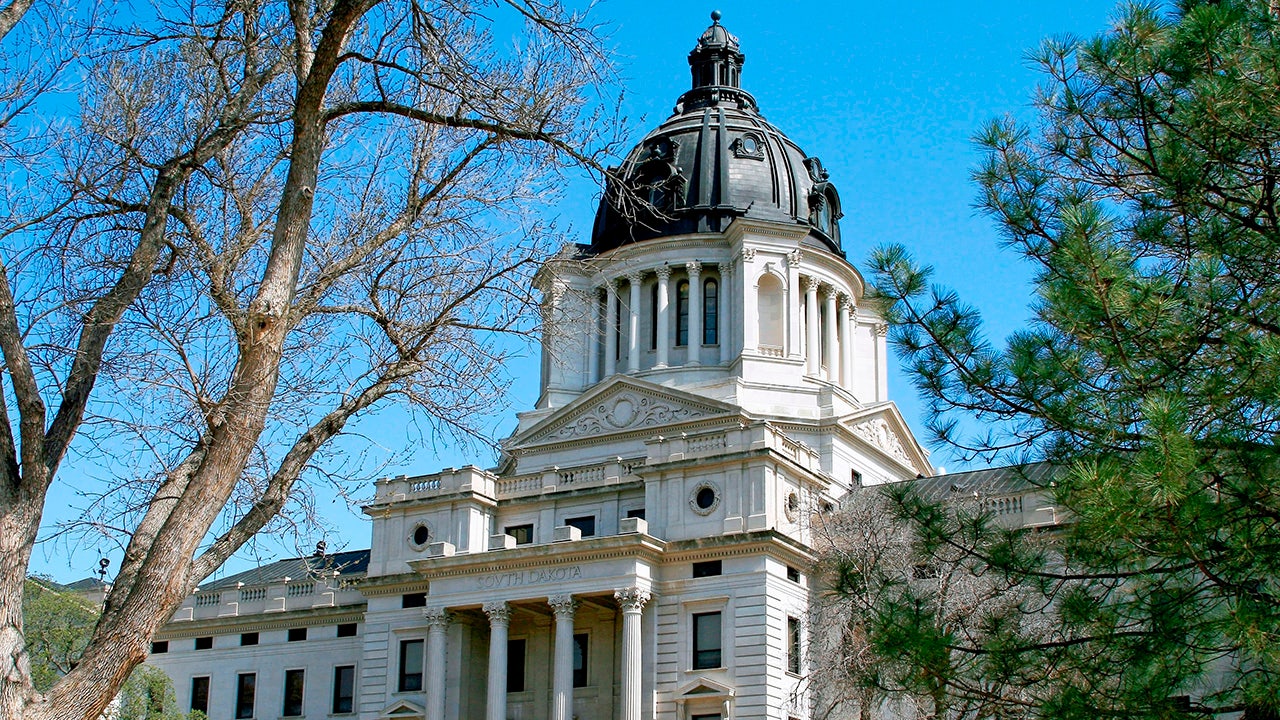Maryland
Maryland lawmakers approve 'strongest' facial recognition rules for law enforcement yet | StateScoop
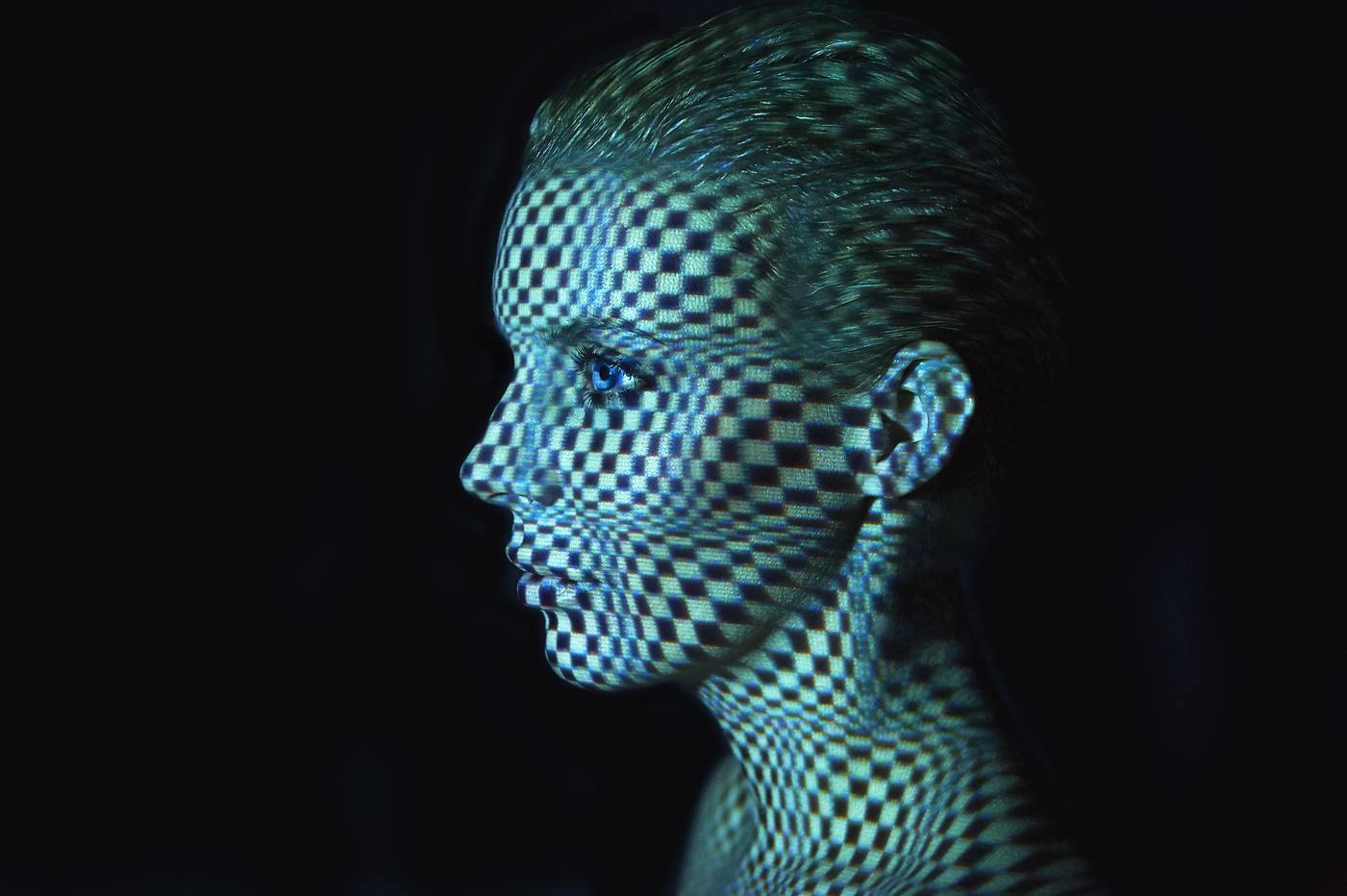
The Maryland General Assembly this week unanimously passed legislation limiting how law enforcement agencies in the state can use facial recognition technology. It’s now on its way to Gov. Wes Moore’s desk for a signature and could become active as soon as Oct. 1.
The legislation, SB182 and HB338, limits law enforcement’s use of facial recognition systems to specific uses and outlines measures agencies must take to document and publish how they use the technology during investigations. Maryland follows a handful of other states that have passed restrictions on use of the controversial technology, but some are calling the state’s regulations the “strongest” so far.
Under the new law, using facial recognition technology in Maryland would be limited to the investigations of certain crimes, including violent crime, human trafficking, child abuse, child pornography, hate crimes, certain weapons crimes and criminal acts that involve “circumstances presenting a substantial and ongoing threat to public safety or national security.” Law enforcement would also not be allowed to use facial recognition on images or recordings of individuals engaging in protected activity, such as protest, unless there is reasonable suspicion to believe the individual has committed a crime, the bill reads.
The law would also prohibit using facial recognition on a sketch or other manually produced image and ban the use of facial recognition for real-time identification. Other limitations include what types of images facial recognition technologies can compare input images to, which is limited to driver’s license image databases maintained by state agencies and mugshot databases maintained by local, state and federal law enforcement agencies. This includes agencies in other countries.
The facial recognition regulations would also limit how the technology can be used during criminal proceedings. Facial recognition matches could not, for example, be used during a criminal proceeding as the sole basis to establish probable cause, but they could be used during a preliminary hearing or in connection with the issuance of an arrest warrant. During those hearings, matches generated from facial recognition technology could only be used to establish probable cause or make a positive identification if the results are supported by additional, independently obtained evidence that corroborates the match.
During criminal proceedings, the state would also be required to disclose if facial recognition was used during an investigation and provide information about the database that was searched — as well as all matches that were generated — during the judicial discovery period.
The legislation would require the state’s Department of Public Safety and Correctional Services to administer a training program for law enforcement officers regarding the use of facial recognition technology by the end of June 2026. Additionally, law enforcement agencies that use facial recognition systems would be required to publish a report by the start of February each year disclosing all uses of the technology.
Maryland follows a handful of other states that have moved to regulate the tech. Some, such as Vermont, have opted to allow use of facial recognition only for certain investigatory purposes. Others have set more stringent guardrails, such as those created by a 2020 Massachusetts law that require police to obtain a warrant to use the technology and create a commission to study use of the technology and suggest additional regulations.

Maryland
Economist: EVs Can Help Drive U.S. to Carbon-Neutral Power Grid
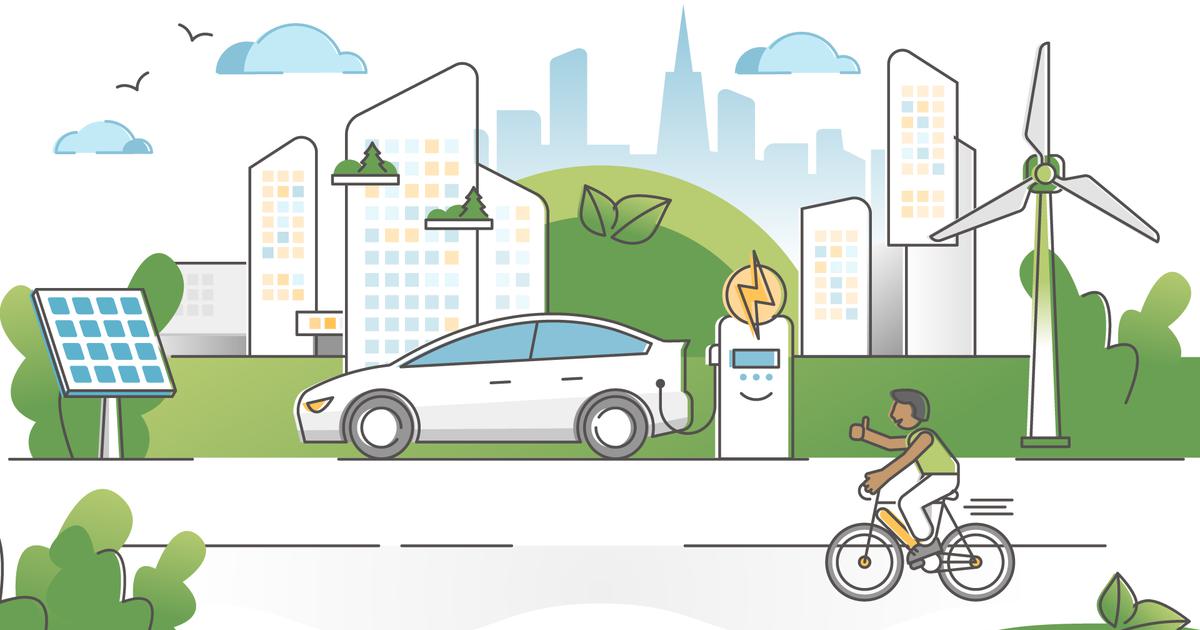
Vehicle standards recently announced by the Environmental Protection Agency establish stringent new goals for manufacturers to slash greenhouse gas emissions and other forms of pollution, pushing the industry to accelerate a transition to electric vehicles.
The ruling aims to help achieve the administration’s goal to reduce U.S. emissions 50-52% below 2005 levels by 2030 and become carbon-neutral by 2050. But is it realistic to expect most Americans to switch to cars that, for now, are significantly more expensive than their gas-powered counterparts and rare on the used market? And will deploying vast fleets of EVs to replace traditional vehicles help prevent climate change if they’re charging up with fossil fuel-generated electricity?
To get some answers, we sat down with Joshua Linn, a professor in the University of Maryland’s Department of Agricultural and Resource Economics, who studies the effects of environmental policies and market incentives in the transportation, electricity and industrial sectors.
Do you think it’s possible to eliminate new gas vehicles by 2050, or to meet U.S. climate goals, for that matter?
2050 is a long way off, and when you look at the market for cars now, it is a lot different from what it was 25 years ago. Historically, a few decades is what’s required for big transitions in car markets. We’re still a long way from having all electric vehicles, and it seems unlikely we’re going to meet those targets ahead of time, but a lot will come down to how consumers perceive these vehicles. Many people are just still just learning about it and considering it.
We have a lot of policies that are supporting those goals, and they’re definitely pointing us in the right direction. Whether we get there by 2050 or if it takes longer is pretty hard to predict.
One barrier to adoption is that EVs tend to be more expensive than comparable gas vehicles, with the most popular EVs starting in the mid-$40,000s. How has China been selling them in the $10,000 range?
There are lots of ways that the market in China is different from the U.S. Many of China’s EVs are small, lower-end types of vehicles. I’m skeptical that those types of vehicles would do well here.
U.S. consumers have stronger preferences for big vehicles and certain accessories, and the segment of the market that’s expanding here is in crossovers and sport utility vehicles. That’s also where the manufacturers can earn higher markups, so that’s where they are putting their efforts for EVs. The market for smaller EVs just hasn’t been there yet.
But most EVs are too expensive to qualify for tax credits. Isn’t that hurting the switchover to electric cars?
These restrictions stem from a combination of politics and concerns about equity. EV subsidies didn’t used to have the price caps or income requirements, and nearly all of those tax credits were being claimed by very high-income households for very high-dollar vehicles. With the Inflation Reduction Act, there was a desire to shift those subsidies toward lower-income households who tend to buy less expensive vehicles.
That makes sense. Higher-income households will tend to buy what they want even without a subsidy, but when you offer subsidies targeted toward lower-income households, those consumers do respond to price reductions, and the subsidies are more effective at boosting sales.
As a result, now I think you’re going to see a lot more vehicles priced just below the cap, maybe a little smaller and with fewer bells and whistles, aimed at a different segment of the market.
Economically, how does owning an EV in the long term compare to having a gas vehicle?
Overall, it can be a good deal for many customers, but it’s not an overwhelming savings. You don’t pay for gasoline, but you do pay for electricity. So, it really depends a lot on how much you drive and where you live. In regions like Maryland, we’re sort of in the middle for electricity prices across the country, and it’s more attractive than somewhere like California where electricity rates are very high.
Most drivers are converting to EVs from efficient gasoline vehicles like hybrid sedans, not giant pickup trucks. So, if you compare an electric vehicle to an efficient gas-powered sedan, you’ll cut your driving costs per mile by maybe half, depending on gasoline prices. You may save hundreds of dollars a year, but it probably won’t be thousands.
And then you have to consider the cost of adding a charging station to your home, although there are subsidies for that. And maintenance costs on EVs are lower.
For those who don’t see that as an economic incentive, and aren’t concerned about cutting carbon emissions, how will the U.S. increase EV adoption?
That gets back to the idea of how consumers see these vehicles, and I think it’s given rise to a new strategy, which is to say, “Yes, you will save on fuel, it’s good for the environment and all that’s true, but it’s also just more fun to drive an EV.” They give you really good performance on acceleration. They’re quieter, and manufacturers are building in entertainment features and high-end interiors.
Much of the U.S. grid still runs on fossil fuels, so if all Americans switch to electric cars, won’t that just shift emissions from cars to the power companies?
As more people drive EV’s across the country, there’s going to be an increase in overall electricity demand, which means there’s going to have to be investment in the power grid—new generators, and enhancements to the distribution network, all of that. If the cost of wind and solar are cheap, and other environmental regulations increase the cost of building new coal or natural gas-fired power plants, people will build wind and solar to meet the electricity demand. And that’s how we eventually decarbonize our electricity sector.
Maryland
Picturing Maryland: A photo every day in 2024 part 3 | PHOTOS

Picturing Maryland: A Baltimore Sun photography project showcasing the faces, places and events happening around us.





Maryland
Maryland high school lacrosse regional playoff brackets released

The Maryland Public Secondary Schools Athletic Association released its high school boys and girls lacrosse regional playoff seeds on Monday. Regional quarterfinal action is set to begin Wednesday, with the semifinals on Friday and finals next Monday.
Here are the regional brackets for all Baltimore-area teams.
Girls lacrosse
Class 4A
Class 3A
Class 2A
Class 1A
Boys lacrosse
Class 4A
Class 3A
Class 2A
Class 1A
-

 News1 week ago
News1 week agoBoth sides prepare as Florida's six-week abortion ban is set to take effect Wednesday
-

 Politics1 week ago
Politics1 week agoGOP Rep. Bill Posey won't seek re-election, endorses former Florida Senate President as replacement
-

 World1 week ago
World1 week agoRussian forces gained partial control of Donetsk's Ocheretyne town
-

 World1 week ago
World1 week agoZelenskyy warns of Russian nuclear risks on Chernobyl anniversary
-

 Politics1 week ago
Politics1 week agoHouse Republicans brace for spring legislative sprint with one less GOP vote
-
Movie Reviews1 week ago
Challengers Movie Review
-

 World1 week ago
World1 week agoAt least four dead in US after dozens of tornadoes rip through Oklahoma
-

 Politics1 week ago
Politics1 week agoAnti-Trump DA's no-show at debate leaves challenger facing off against empty podium



